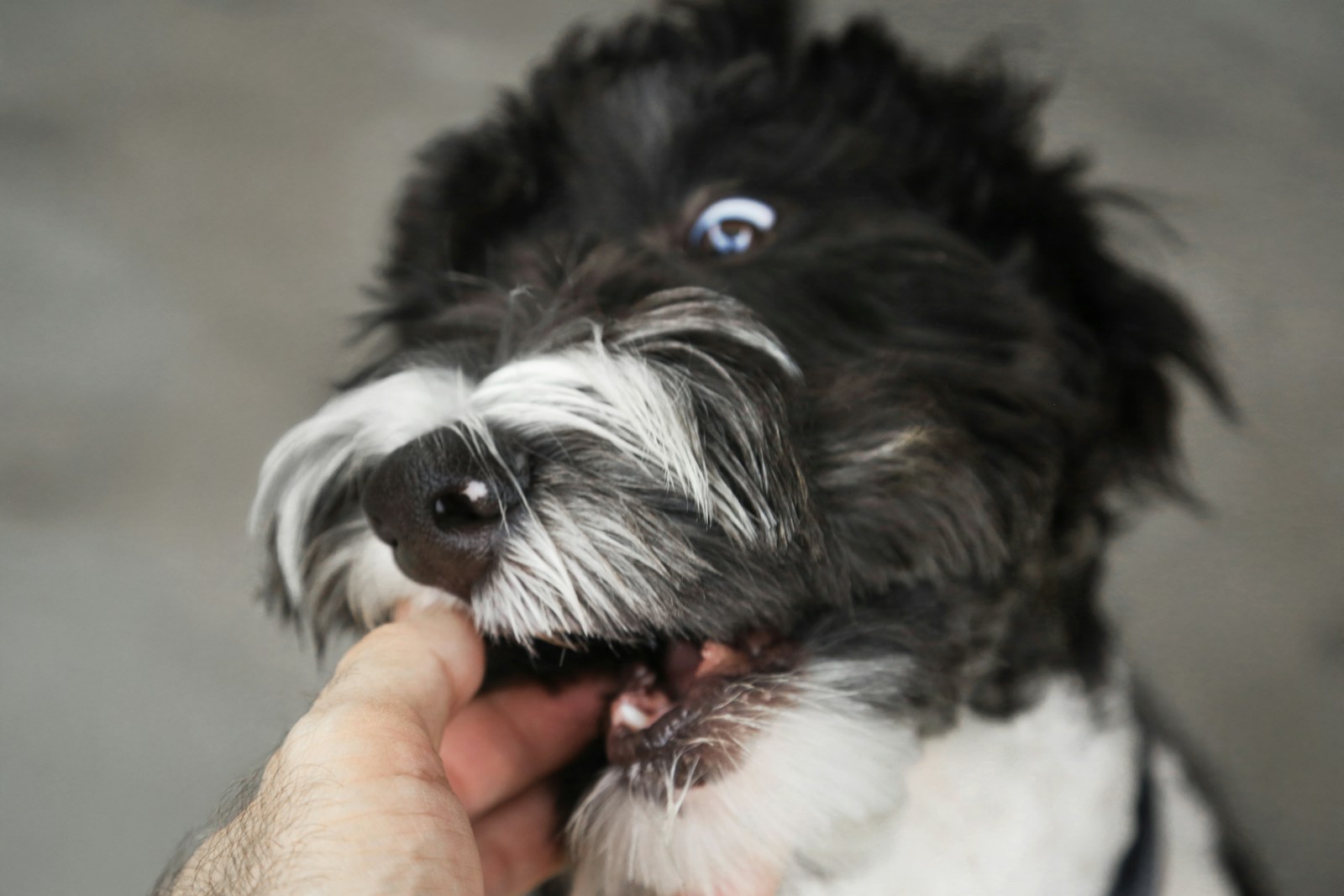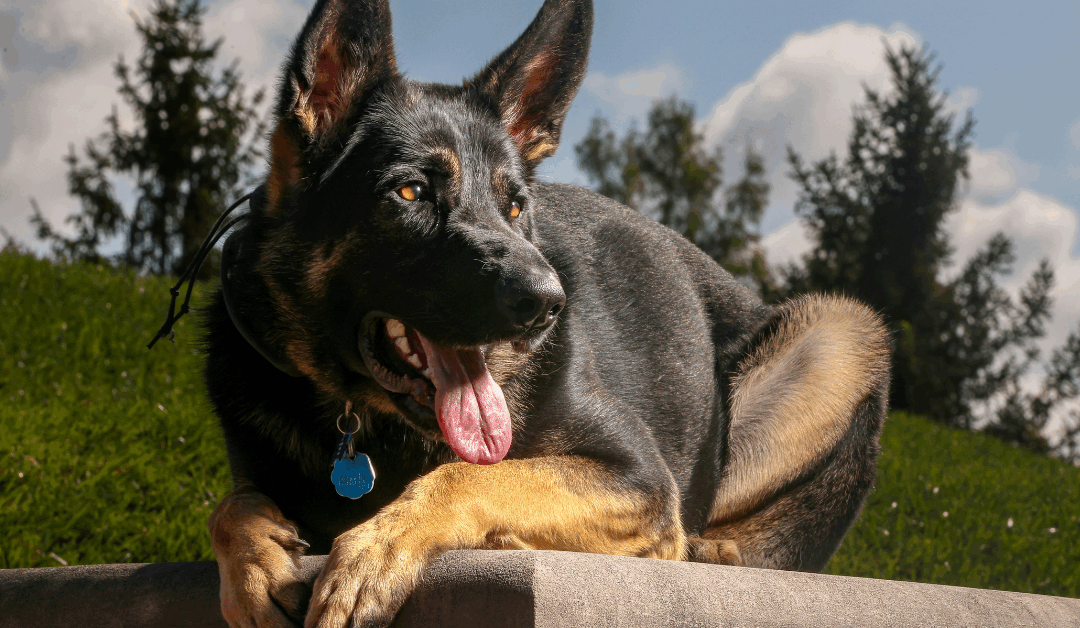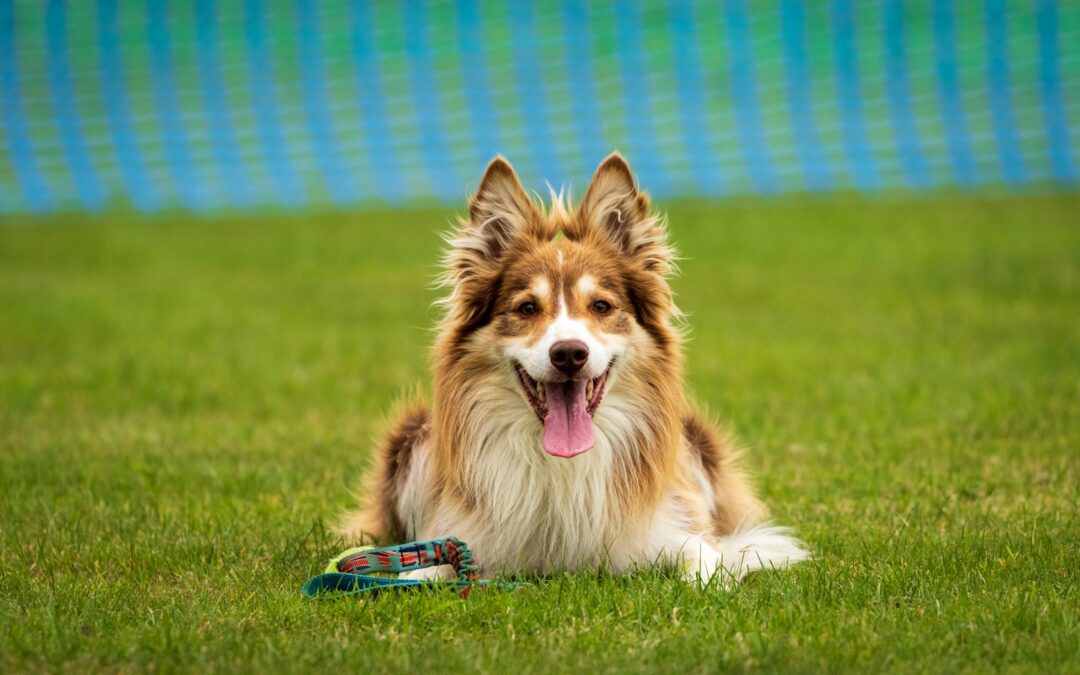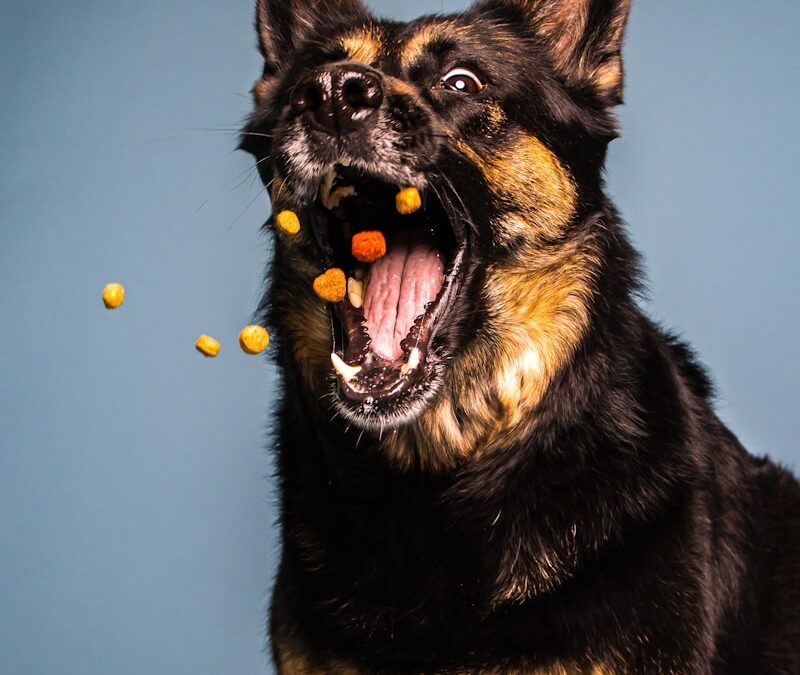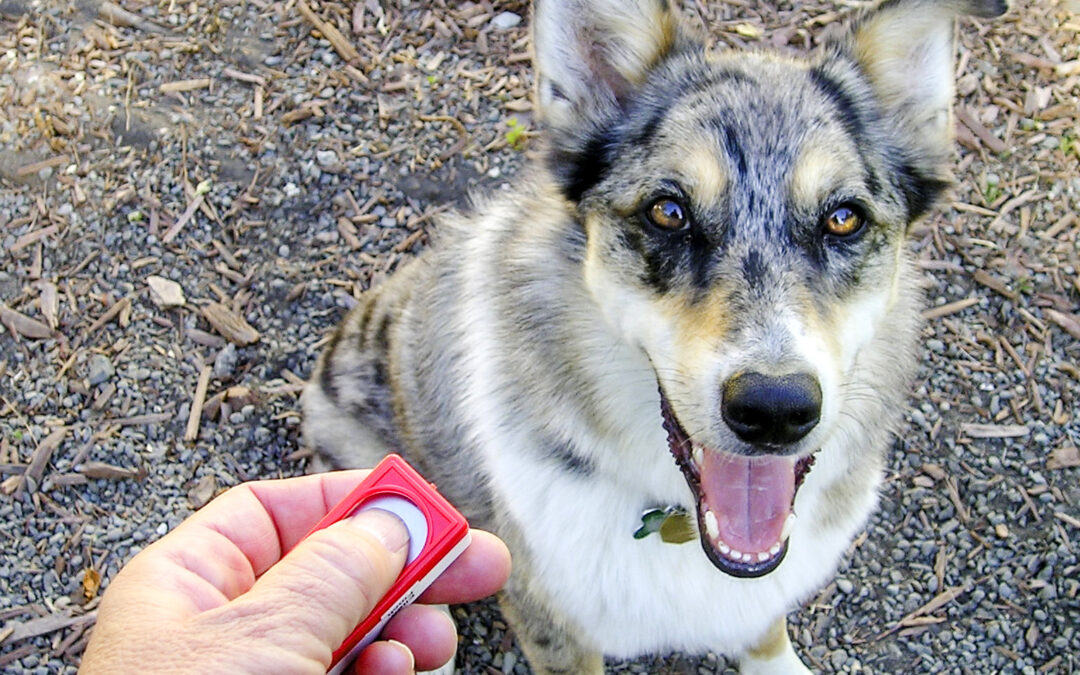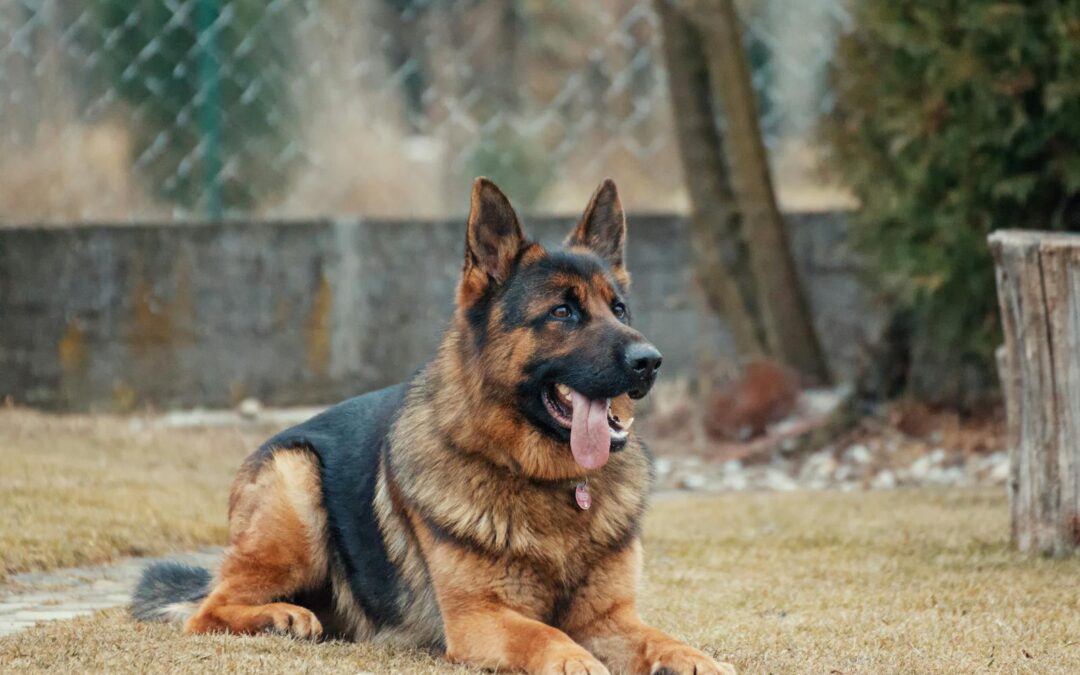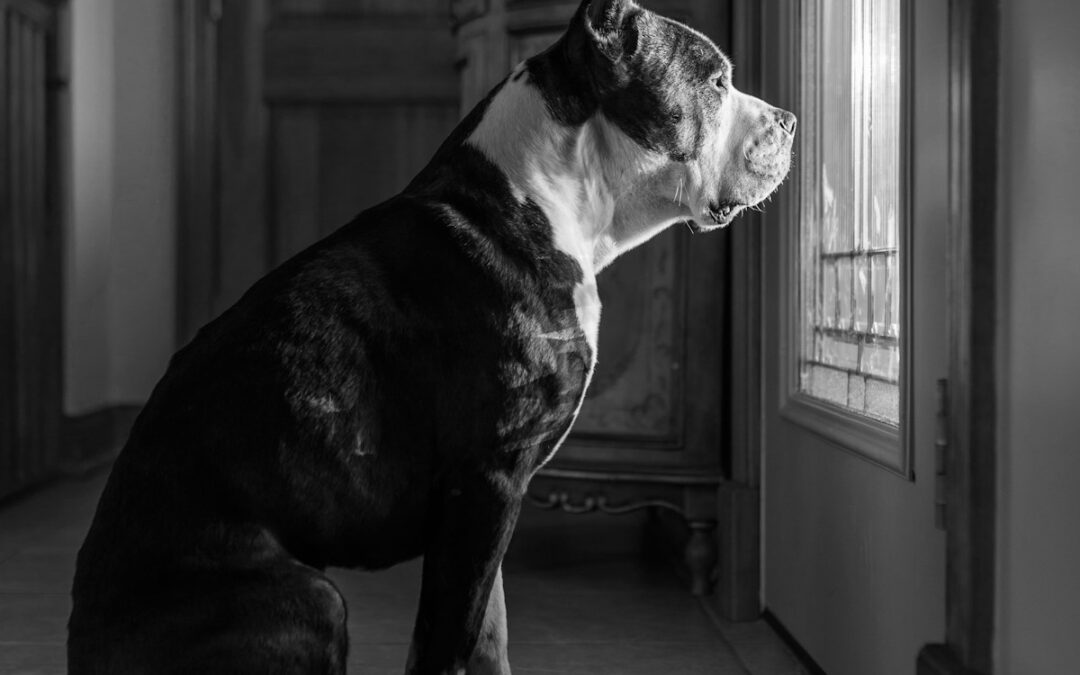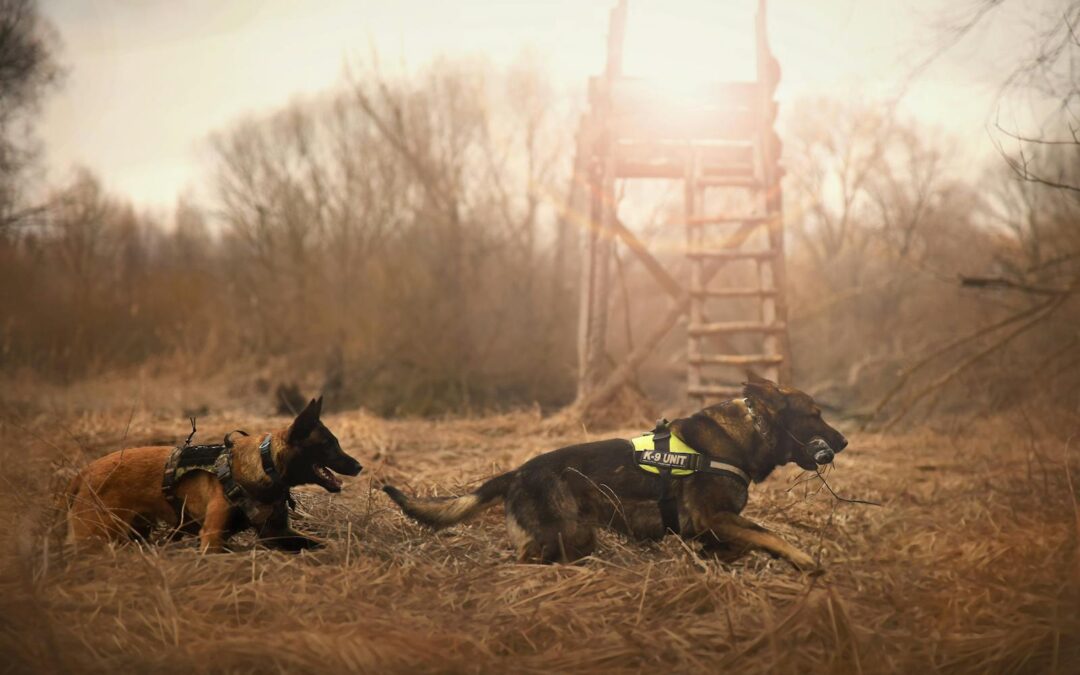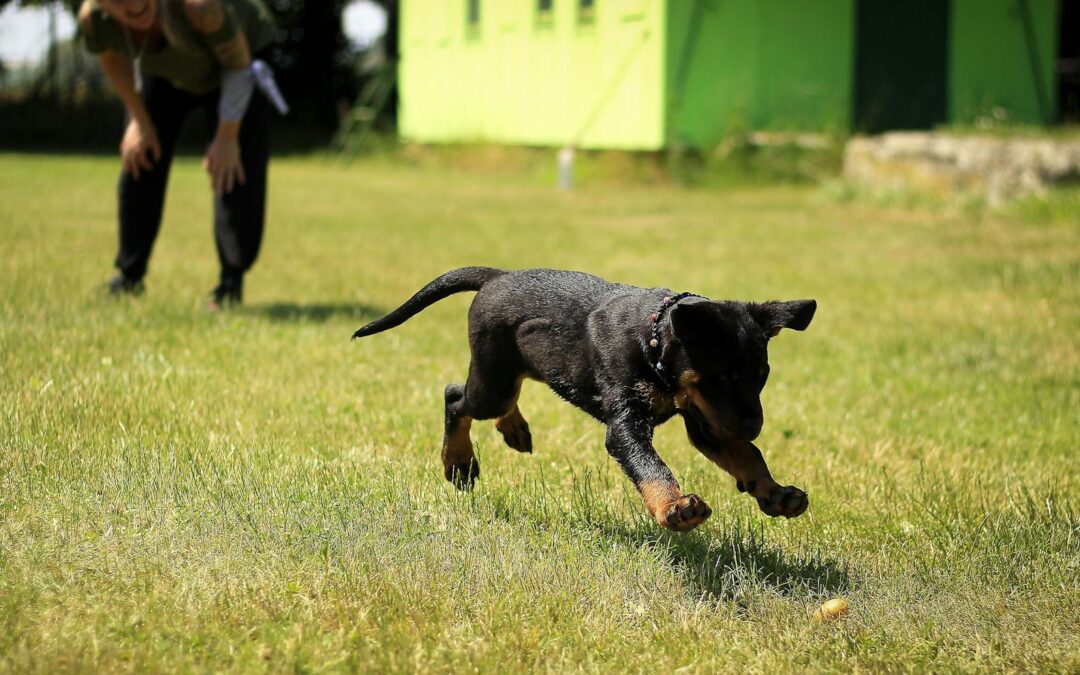Puppy teeth may be small, but they’re surprisingly sharp. If your new furry family member has turned playtime into a painful experience, you’re not alone. Puppy biting is one of the most common concerns new dog owners face, and the good news is that it’s completely normal behavior that can be managed effectively.
Most puppies bite because it’s how they naturally explore their world and communicate with other dogs. However, what works between puppies doesn’t translate well to human skin. Understanding why your puppy bites and learning proven techniques to redirect this behavior will help you build a stronger bond with your pet while keeping everyone safe and comfortable.
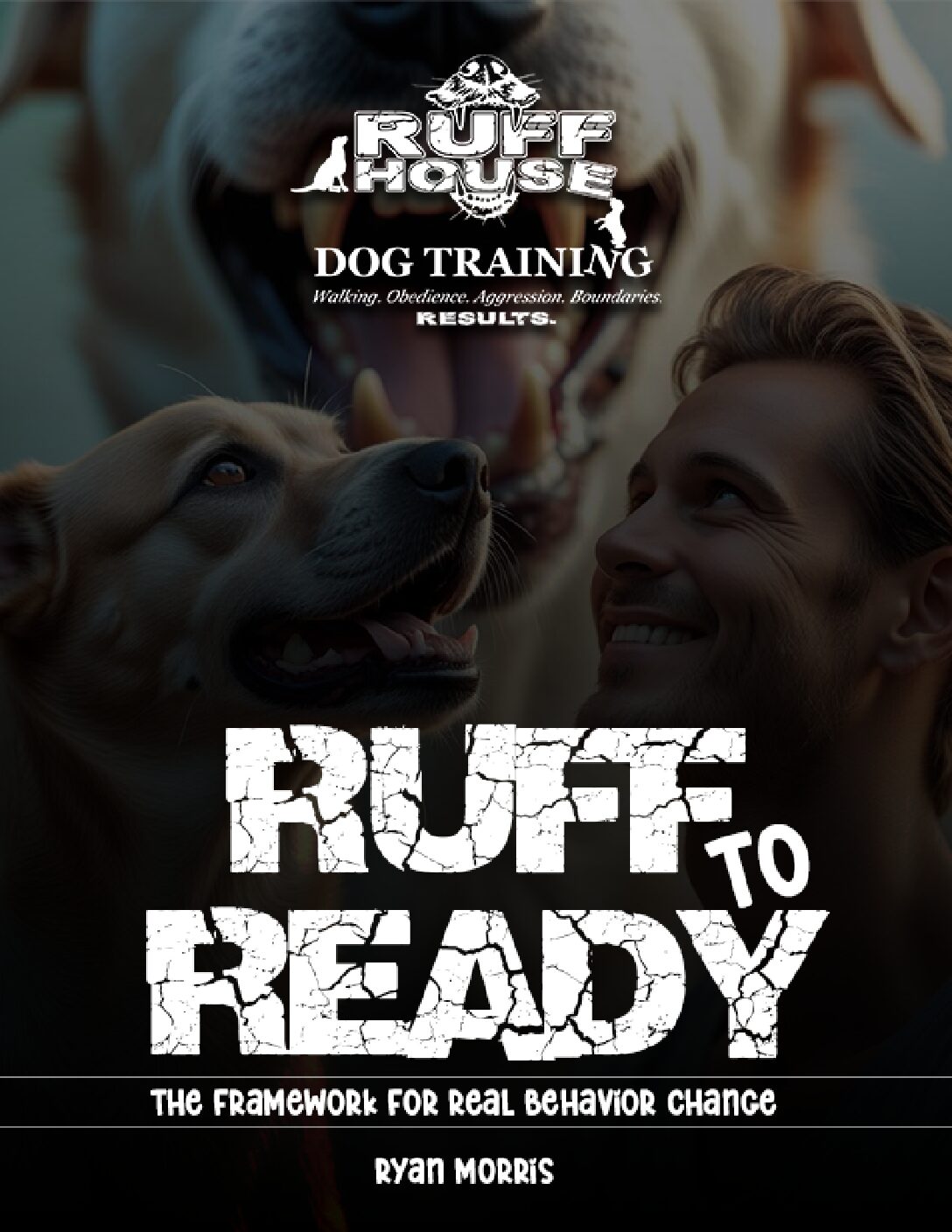
Unlock Real Behavior Change – Download Your Free Guide Now
"*" indicates required fields
This comprehensive guide will walk you through everything you need to know about puppy biting behavior, from recognizing the signs of normal play versus problematic aggression to implementing effective training strategies that work for dogs of all breeds and temperaments.
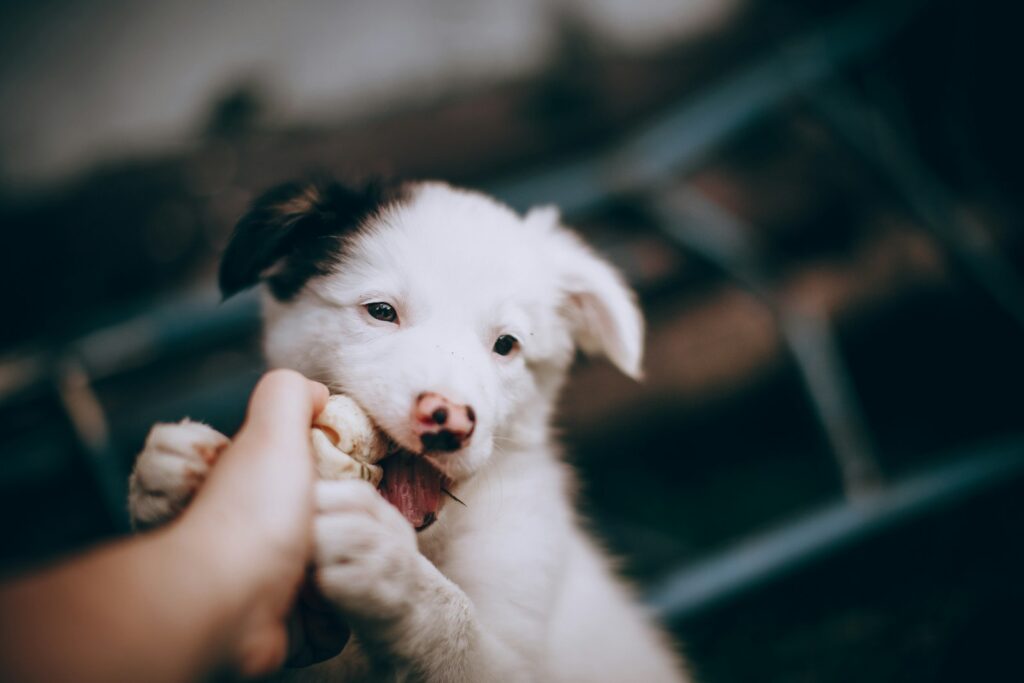
Photo by Helena Lopes on Unsplash
Understanding Normal Puppy Nipping
Puppy biting is a normal part of canine development. When puppies play with their littermates and mother, they use their mouths to communicate, establish boundaries, and learn social skills. This behavior, called “mouthing,” helps them understand how much pressure is appropriate during interactions.
Young puppies haven’t yet developed bite inhibition—the ability to control the force of their bite. They learn this crucial skill through feedback from other dogs. When a puppy bites too hard during play, their playmate will yelp and stop the interaction, teaching the biting puppy that excessive force ends the fun.
However, human skin is much more sensitive than dog fur and skin. What feels like gentle play to a puppy can be quite painful for humans. Additionally, puppies often become more mouthy when they’re overtired, overstimulated, or seeking attention.
Recognizing Play Biting vs. Aggressive Behavior
Most puppy biting falls into the category of normal play behavior. Play biting typically occurs during:
- Interactive games with toys
- Gentle roughhousing
- Exploration of new objects or people
- Times when your puppy is excited or energetic
Your puppy’s play biting is usually accompanied by a relaxed body posture, play bows (front end down, rear end up), and a generally happy demeanor. The puppy’s tail is often wagging, and they may bounce around playfully.
Aggressive biting, while less common in young puppies, requires immediate attention from a certified applied animal behaviorist or professional trainer. Signs of aggressive behavior include stiff body posture, growling, raised hackles, and biting that occurs in response to handling, food guarding, or territorial situations.
The Science Behind Puppy Bite Inhibition
Bite inhibition is perhaps the most important lesson your puppy can learn. This skill allows adult dogs to use their mouths gently, even during excited play or stressful situations. Dogs with poor bite inhibition may cause serious injuries if they ever feel compelled to use their teeth defensively.
Puppies naturally begin learning bite inhibition from their mothers and littermates. When play becomes too rough, the recipient of a hard bite will yelp loudly and immediately stop playing. This teaches the biting puppy that applying too much pressure results in the end of social interaction.
Your job as a pet owner is to continue this education using similar principles. By consistently responding to hard bites with immediate consequences—such as ending play sessions or removing your attention—you help your puppy learn that gentle mouths lead to continued fun and interaction.
The Critical Learning Period For Biting Behavior
Most veterinarians and animal behaviorists agree that the ideal time to teach bite inhibition is between 8 and 16 weeks of age. During this critical socialization period, puppies are most receptive to learning appropriate social behaviors.
Puppies who miss this learning opportunity may struggle with mouth control throughout their lives. This is why many dogs purchased from pet stores or puppy mills, where early socialization is often inadequate, may have difficulty with bite inhibition.
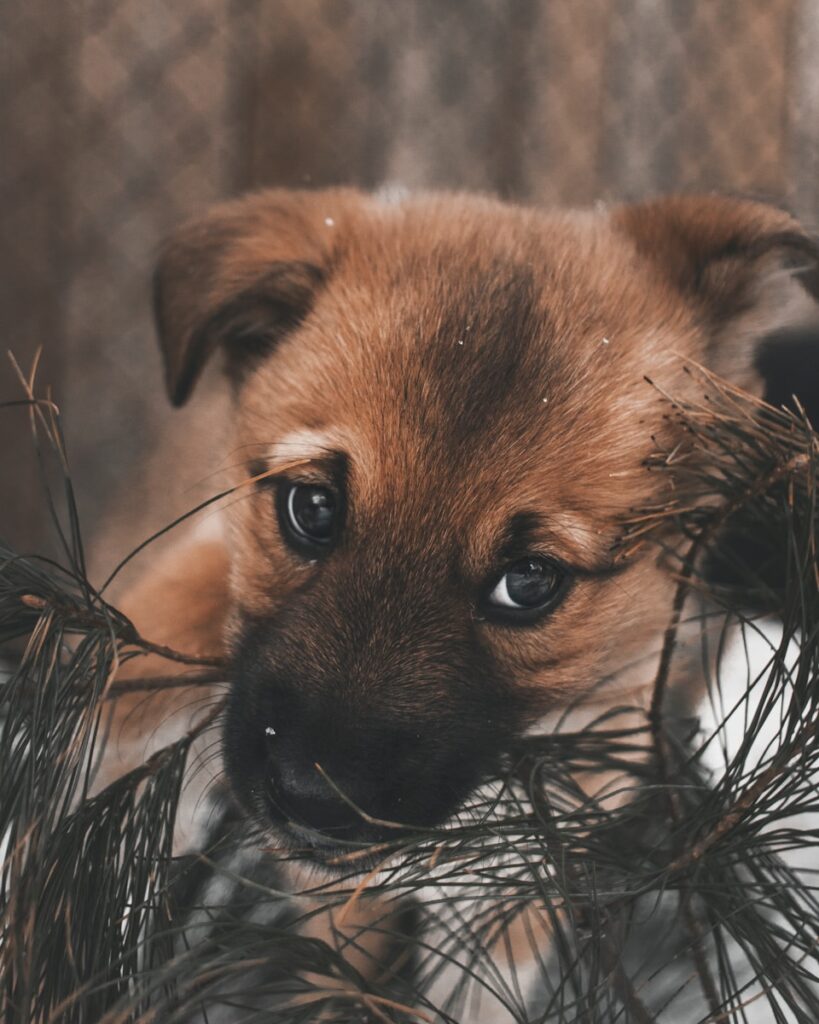
Photo by Daniel Lincoln on Unsplash
Proven Techniques to Stop Puppy Biting
Successfully managing puppy biting requires consistency, patience, and the right techniques. Here are the most effective methods used by professional dog trainers:
The “Ouch” Method
This technique mimics how other puppies respond to hard bites. When your puppy bites you:
- Say “ouch” in a high-pitched voice immediately
- Stop all interaction and turn away from your puppy
- Ignore your puppy for 30-60 seconds
- Resume play with a toy, redirecting their attention
The key is to make the “ouch” sound sharp and sudden, similar to a puppy’s yelp. This method teaches your puppy that biting human skin ends all the fun immediately.
Redirection Training
Redirection involves immediately offering an appropriate alternative when your puppy tries to bite you:
- Keep a chew toy or tug toy readily available during interactions
- When your puppy moves to bite your hand, quickly offer the toy instead
- Praise enthusiastically when your puppy grabs the toy
- Engage in appropriate play with the toy
This technique works particularly well because it satisfies your puppy’s natural desire to use their mouth while teaching them what’s acceptable to bite.
Time-Out Training
For persistent biters, a brief time-out can be highly effective:
- When your puppy bites, immediately stop the play session
- Calmly place your puppy in a designated quiet area (not their crate, which should remain positive)
- Leave them alone for 2-3 minutes
- Return and resume normal interaction
Time-outs teach puppies that biting results in isolation from their favorite thing—you and your attention.
Ryan’s Recommendation
The puppy stage is a great one to begin to teach tug. Tug is one of my favorite games to play with the dogs as it begins to lay the groundwork for value building and structure. The puppies are going to bite, so why not take something they do naturally and use it as a training mechanism. Every interaction with the pup matters and we want to reduce the frivolous interactions (the running from the dog when they bite, the ignoring when they bite, etc) and turn it into meaningful interactions. You will get bitten in the beginning and while it’s difficult to communicate to owners to NOT react to the bite and NOT turn your hand into prey, it’s a natural response for most people.
Try to have a tug toy close by and engage in tug. If you need help learning to play tug, my Ruff to Ready video course is a great way to learn that and much more that will help reduce stress with puppy ownership and increase knowledge on what to do through proven tools and techniques. Take your puppy’s behavior and turn it into meaningful play. Your new puppy will go from chaos to beginning to understand structure and value in no time.
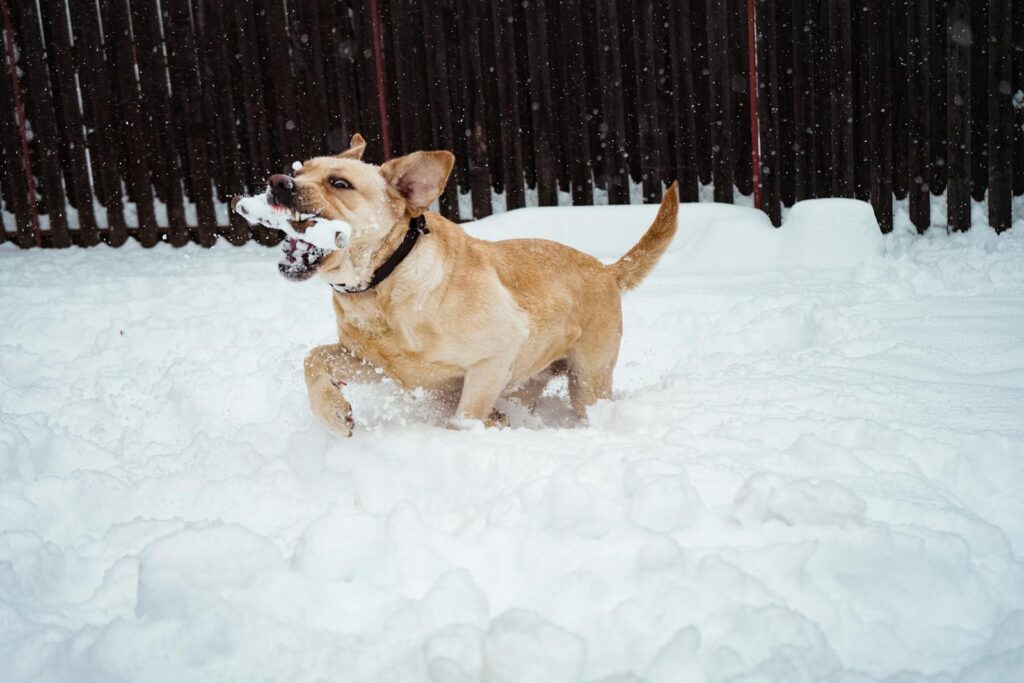
Photo by Vlad Chețan on Pexels
Creating the Right Environment for Success
Your puppy’s environment plays a crucial role in managing biting behavior. Overstimulated puppies are much more likely to engage in rough play and biting.
Managing Energy Levels
Tired puppies are generally well-behaved puppies. Ensure your pup gets adequate physical exercise appropriate for their age and breed. A good rule of thumb is five minutes of exercise per month of age, twice daily.
Mental stimulation is equally important. Puzzle toys, training sessions, and new experiences help tire your puppy’s brain, reducing the likelihood of destructive or nippy behavior.
Puppy-Proofing Your Space
Remove items that encourage inappropriate chewing or biting. Keep shoes, clothing, and other personal items out of reach. Instead, provide plenty of appropriate chew toys that satisfy your puppy’s need to mouth objects.
Rotate toys regularly to maintain your puppy’s interest. A toy that seems boring today might be exciting again next week.
The Role of Socialization in Reducing Biting
Proper socialization is crucial for developing good bite inhibition and overall behavioral health. Puppy classes provide controlled environments where young dogs can interact with other puppies and learn appropriate play behaviors.
Benefits of Puppy Classes
Professional puppy classes offer several advantages:
- Supervised interaction with other puppies
- Exposure to different people, sounds, and environments
- Professional guidance on training techniques
- Early identification of potential behavioral issues
Look for classes that emphasize balanced reinforcement training methods and maintain appropriate health and vaccination requirements.
Safe Socialization at Home
If formal classes aren’t available, you can still provide socialization opportunities:
- Invite friends with well-behaved, vaccinated adult dogs for controlled visits
- Expose your puppy to different family members of various ages
- Practice handling exercises, touching paws, ears, and mouth gently
- Introduce new sounds, surfaces, and experiences gradually
Common Mistakes to Avoid
Many well-intentioned puppy owners inadvertently encourage biting behavior through their responses. Here are the most common mistakes:
Playing Too Roughly
Rough play with your hands teaches puppies that human body parts are appropriate play toys. Always use toys for physical play, keeping hand interactions gentle and calm.
Inconsistent Responses
If family members respond differently to biting—some laughing it off while others react strongly—your puppy receives mixed messages. Everyone in the household must respond consistently to biting behavior.
Using Physical Punishment
Never hit, shake, or physically punish a biting puppy. These methods can increase fear and aggression while damaging your relationship with your pet. Balanced training methods are more effective and preserve trust.
Giving Up Too Soon
Bite inhibition training takes time and consistency. Most puppies need several weeks to months to fully develop appropriate mouth control. Stay patient and consistent with your training approach.
When Adult Teeth Emerge
Most puppies begin losing their baby teeth around 4-6 months of age. During this teething period, biting may temporarily increase as your puppy seeks relief from sore gums.
Provide appropriate chew toys designed for teething puppies. Frozen toys or wet washcloths can provide soothing relief. Continue using the same training techniques, but be patient as your puppy navigates this uncomfortable developmental phase.
Adult teeth are larger and stronger than puppy teeth, making continued training even more important. A puppy who hasn’t learned bite inhibition by the time their adult teeth emerge poses a greater risk of causing injury.

Balanced Training Methods At Ruff House Dog Training: A Better Approach to Puppy Training
Balanced training methods combine the best aspects of positive reinforcement with clear, gentle boundaries to help your puppy understand expected behaviors. Unlike purely positive training, which focuses solely on rewarding desired actions, balanced training introduces mild corrections to guide your puppy away from unwanted behaviors without employing harsh punishments. This approach emphasizes communication and consistency while respecting your dog’s emotional well-being.
For example, if your puppy starts to nip during playtime, you would use positive reinforcement to reward gentle behavior but pair it with a non-harmful signal like a firm “no” or withdrawing attention momentarily. This helps the puppy quickly associate the consequences of their actions, encouraging better choices in the future. Balanced training ensures your puppy learns essential skills while nurturing trust and a strong bond with you. It is both effective and humane, setting the foundation for a well-behaved and happy dog.
Working with Ruff House Dog Training
Some puppies may need additional help from professional dog trainers or certified applied animal behaviorists. Consider seeking professional help if:
- Your puppy’s biting is getting worse despite consistent training
- Biting seems motivated by fear or aggression rather than play
- Your puppy is older than 6 months and still hasn’t learned bite inhibition
- You feel overwhelmed or unsafe handling your puppy
Ruff House Dog Training can assess your specific situation and provide personalized training plans. They can also help identify any underlying issues that might be contributing to problematic behavior.
Whether it’s puppy biting, crate whining, potty accidents, or just total chaos, this online course Ruff To Ready, from Ryan, head trainer at Ruff House Dog Training, gives you the tools to fix it — and the confidence to lead.
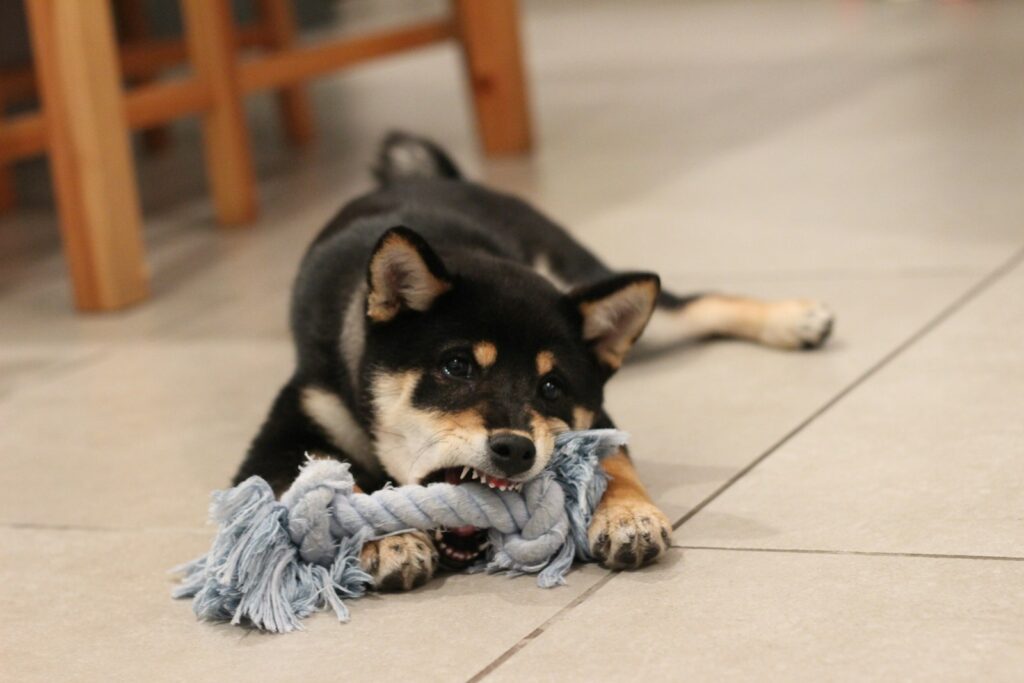
Photo by Kobi Kadosh on Unsplash
Products to Give Your Puppy to Use Instead of Biting
Here are seven highly recommended products that can help redirect your puppy’s biting tendencies in a safe and constructive way. These toys and tools are not only effective but also fun for your furry friend to use!
KONG Puppy Dog Toy
The KONG Puppy is specially designed for teething puppies. Made from soft rubber, it helps soothe sore gums while keeping your pup busy chewing. Purchase here.
Nylabone Puppy Chew Toy
Perfect for promoting healthy chewing habits, this durable yet gentle chew toy is designed specifically for puppies. Purchase here.
Benebone Puppy Wishbone Chew Toy
Made with real flavors like bacon and peanut butter, this chew toy is enticing and safe for puppies learning appropriate chewing behaviors. Purchase here.
Petstages Cool Teething Stick
This freezable chew stick is great for soothing a teething puppy’s gums while also providing entertainment. Purchase here.
Chuckit! Ultra Ball
A favorite among playful puppies, this durable and lightweight ball is great for games of fetch while redirecting chewing energy. Purchase here.
West Paw Zogoflex Hurley Dog Toy
This tough chew toy doubles as a fetch toy and is made with non-toxic, recyclable materials, ensuring a safe and healthy playtime. Purchase here.
SmartPetLove Snuggle Puppy Behavioral Aid Toy
This unique toy comes with a pulsing heartbeat and heat pack to comfort puppies and reduce stress, helping curb unwanted biting behavior. Purchase here.
Introduce these tools to your puppy and watch as they help redirect their biting behavior into healthy, productive playtime activities!
Your Next Steps to Success
Puppy biting doesn’t have to dominate your relationship with your new companion. With understanding, patience, and consistent application of proven techniques, you can teach your puppy appropriate mouth manners while building a strong, trusting bond.
Start implementing these strategies today, beginning with the “ouch” method and redirection training. Remember that consistency is key—every family member must respond to biting in the same way for training to be effective.
Consider enrolling in puppy classes or working with a professional trainer if you need additional support. The investment in proper early training pays dividends throughout your dog’s life, creating a well-mannered companion who brings joy rather than stress to your daily interactions.
Your puppy’s biting phase will pass, and with the right approach, you’ll emerge with a dog who has learned one of the most important lessons of their life: how to use their mouth gently and appropriately in all situations.
